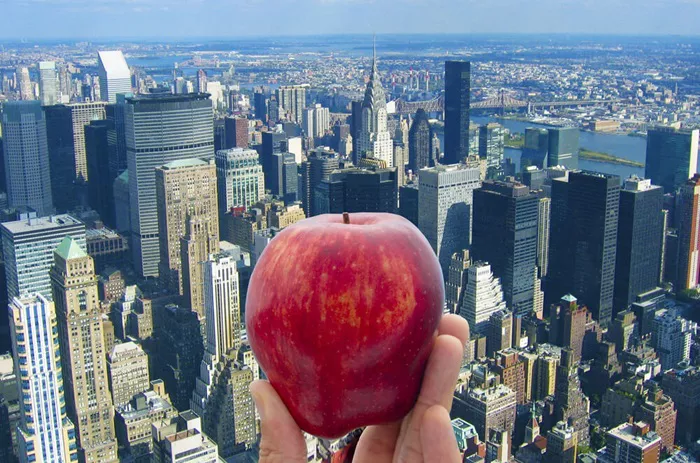When you think of New York City, one of the first nicknames that might come to mind is the “Big Apple.” But have you ever wondered how this iconic name came about? The story behind it is filled with history, culture, and a bit of mystery. As someone who has spent a lot of time exploring the city, I’ve dug deep into the origins of this famous moniker, and I’m excited to share what I’ve discovered.
The Early References
The term “Big Apple” didn’t become widely known overnight. Its roots can be traced back to the early 20th century. In the 1920s, sports writer John J. Fitz Gerald started using it in his columns for the New York Morning Telegraph. Fitz Gerald was a fan of horse racing, and he heard the phrase “big apple” used by stable hands and jockeys in New Orleans. In the world of horse racing, the “big apple” was a metaphor for the biggest and most important races, the ones that every jockey and horse trainer dreamed of winning.
Fitz Gerald brought this term back to New York and began using it to describe the city’s vibrant and competitive horse racing scene. He wrote about how New York was the “big apple” of the racing world, where all the top horses, jockeys, and trainers gathered for the most prestigious events. Slowly but surely, the term started to gain some traction within the horse racing community in New York.
The Jazz Connection
Another important piece of the puzzle is the jazz music scene of the 1920s and 1930s. Jazz musicians also played a significant role in popularizing the nickname. At that time, New York City was the epicenter of the jazz movement, with countless clubs and venues hosting live performances every night. Musicians traveling from other cities would refer to New York as the “big apple,” seeing it as the ultimate destination, the place where they could make it big in the music industry.
The phrase fit perfectly with the spirit of jazz, which was all about excitement, opportunity, and a chance to shine. Singers and musicians would use the term in their conversations, songs, and interviews. For example, in 1930, a song called “The Big Apple” was released, further spreading the name and associating it with the city’s lively and energetic atmosphere.
The Tourist Industry Boost
In the 1970s, New York City was facing some tough times, with high crime rates and an economic downturn. The city’s tourism board saw an opportunity to rebrand and boost its image. They decided to embrace the “Big Apple” nickname and use it as a marketing tool.
They launched a major campaign centered around the “Big Apple” concept. Posters, brochures, and advertisements featured the name, along with images of New York’s famous landmarks like the Statue of Liberty, Times Square, and Central Park. The campaign aimed to attract tourists by highlighting the city’s unique charm, endless opportunities, and vibrant culture. It worked! The “Big Apple” nickname became more widely known around the world, and tourists started flocking to New York, eager to experience the “big apple” for themselves.
Symbolism of the “Big Apple”
Beyond its historical origins, the nickname “Big Apple” also holds a lot of symbolic meaning. An apple is often seen as a symbol of temptation, abundance, and opportunity. New York City, with its countless job opportunities, cultural events, and diverse communities, represents all of these things. It’s a place where people from all over the world come to pursue their dreams, whether it’s in business, the arts, or any other field.
The “big” part of the nickname emphasizes the city’s size, both in terms of its physical area and its influence. New York is a global powerhouse, with a huge impact on finance, fashion, media, and entertainment. It’s a city that never sleeps, always buzzing with activity, and the “Big Apple” nickname captures that sense of bigness and importance.
Variations and Similar Nicknames
Over the years, the “Big Apple” nickname has inspired some variations. For example, people sometimes refer to specific neighborhoods within New York as “little apples,” highlighting their unique characteristics while still connecting them to the overall identity of the city. There are also other cities around the world that have similar nicknames, but none have the same level of fame and recognition as New York’s “Big Apple.”
Conclusion
The story of why New York City is called the “Big Apple” is a fascinating one, filled with elements of sports, music, marketing, and symbolism. From its humble beginnings in the horse racing world and the jazz clubs to its use as a powerful marketing tool, the nickname has become an integral part of New York’s identity. It represents the city’s allure, its opportunities, and its status as a global icon. Whether you’re a local or a visitor, the “Big Apple” is a name that evokes a sense of excitement and wonder, and it will likely continue to do so for generations to come.

